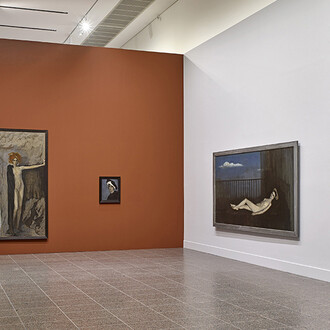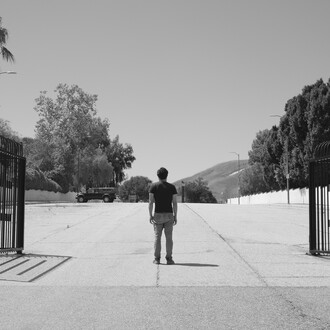The Gallery of Paintings, with works of European painting from the fifteenth to the beginning of the twentieth century, is the department with the oldest roots at Museum Kunstpalast. They go back ultimately to the legendary Picture Gallery that Elector Palatine Johann Wilhelm founded at the close of the seventeenth century.
Johann Wilhelm, Elector Palatine (1658-1716) and Anna Maria Luisa de’ Medici (1667-1743) amassed one of the most significant collections of art in Europe, with masterpieces of the Renaissance and Baroque periods. A building was erected at the Stadtschloss, the Electoral couple’s seat in Düsseldorf, specifically to house this picture gallery – the earliest museum building in Europe. In 1805, Düsseldorf lost its artistic treasure to the Wittelsbach succession (whence it eventually entered the collection of the Alte Pinakothek in Munich). The fifty works remaining in Düsseldorf to this day include two of the main works of the former holding of paintings by Peter Paul Rubens, and the re-acquired Equestrian Portrait of the Elector by Jan Frans van Douven.
When Düsseldorf was made the capital of the Prussian Province of the Rhineland, the Royal Prussian Academy of Art, inaugurated in 1819, was to double as a ‘Zentralmuseum’ of public and private collections. Beside purchases of Old Masters, works from the Academy’s teachers and their students were collected, for example those of J. W. Schirmer, J. Rollmann and E. Dücker, as well as forty-five works from the collection formerly at the Elector’s hunting lodge at Bensberg .
In 1846, to make good the loss of the Electoral Picture Gallery, Düsseldorf citizens founded the ‘Verein zur Errichtung einer Gemäldegalerie zu Düsseldorf’ (Society for the Establishment of an Art Gallery at Düsseldorf). This set to acquiring contemporary art, that is, paintings by the Düsseldorf School. In 1870, following Prussia’s final waiver of her goal of having Bavaria return the Electoral Picture Gallery to Düsseldorf, the Prussian government gave the Düsseldorf Gallery paintings of great value and dating from the fifteenth to the seventeenth century from the Nationalgalerie at Berlin, as a loan. In 2011, a further permanent loan was received.
When, in 1913, the Gallery Society prompted the founding of the Municipal Art Collections,, the new Museumsverein (Museum Society) bought for the Gallery of Paintings works from European artistic centres such as Berlin, Dresden, Munich or Paris.
The 625 works on permanent loan from the Academy Collection from 1932 gave the Gallery of Paintings a further focus, namely upon Italian, Dutch and Flemish Art of the Fifteenth to the Eighteenth Century. The then newly installed ‘Gallery of the Baroque’, with works ranging from Rubens to Zurbarán, today’s ‘Rubensgalerie’, was expanded by further gifts and acquisitions such as from the August Schubert Collection (1935).
The 625 works on permanent loan from the Academy Collection from 1932 gave the Gallery of Paintings a further focus, namely upon Italian, Dutch and Flemish Art of the Fifteenth to the Eighteenth Century. The then newly installed ‘Gallery of the Baroque’, with works ranging from Rubens to Zurbarán, today’s ‘Rubensgalerie’, was expanded by further gifts and acquisitions such as from the August Schubert Collection (1935).
From the very beginning, the temporary exhibitions at the Picture Gallery were based on its own holdings. To this day their prime purpose is to advance research into and to promote knowledge of and access to the collection. One of the most successful exhibitions the Kunstmuseum has mounted was ‘Die Düsseldorfer Malerschule’ (The Düsseldorf School), of 1979. It was the sum of intense research into the holdings and drew important purchases of major works of the Düsseldorf School in its wake. From the 1970s on, monograph and theme exhibitions were shown (A. and O. Achenbach, A. Böcklin, A. Kauffmann, L. Knaus, C. F. Lessing; Hudson and the Rhine). To bring the decorative painters at the Elector’s court, and the collection of oil sketches, back into the public eye, there were also exhibitions devoted to the Venetian-Northern Italian painting of the eighteenth century (Bellotto, Guardi, Pellegrini).
















